Este post também está disponível em:
Português
English
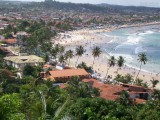
Cabo de Santo Agostinho is a Brazilian municipality in the state of Pernambuco and is located 40 kilometres from Recife.
There are nine beaches spread over an area of 445 square kilometres, with crystal clear waters, white sands, sandstone reefs, volcanic rocks, natural pools, mangroves, coconut trees, churches, historical ruins dating back to the 17th century, viewpoints and cliffs.
The beaches of Cabo de Santo Agostinho are ideal for water sports such as diving and fishing, as well as more radical activities such as abseiling, trekking and paragliding.
One of the most popular programmes in the city is the buggy ride, the best way to visit the beaches, viewpoints and Vila de Nazaré, where the historical ruins are located, as well as taking the clay bath, famous for the aesthetic benefits of the material.
It is a set of beauties for which tourists visit Cabo de Santo Agostinho.
The ideal beaches for water sports, diving, fishing, abseiling, trekking, and paragliding.
Named Costa dos Arrecifes due to the successive reefs that dot it, this stretch of coastline comprises the beaches of southern Pernambuco in the direction of Recife – Maceió – from the city of Cabo de Santo Agostinho, where the port of Suape is located, to Tamandaré, near Alagoas, with main access via PE-060.
The best beaches are Gaibu, Calhetas, Pedra do Xaréu and Camboa, in Cabo de Santo Agostinho, by PE-028; Muro Alto, Cupe, da Vila and Maracaípe, in Porto de Galinhas, by PE-038; Carneiros and Tamandaré, in Tamandaré, by PE-076.
You can get to know them in a quick trip from Recife, as the furthest beach on the route is about 100 kilometres away.

Videos about the sights of Cabo de Santo Agostinho
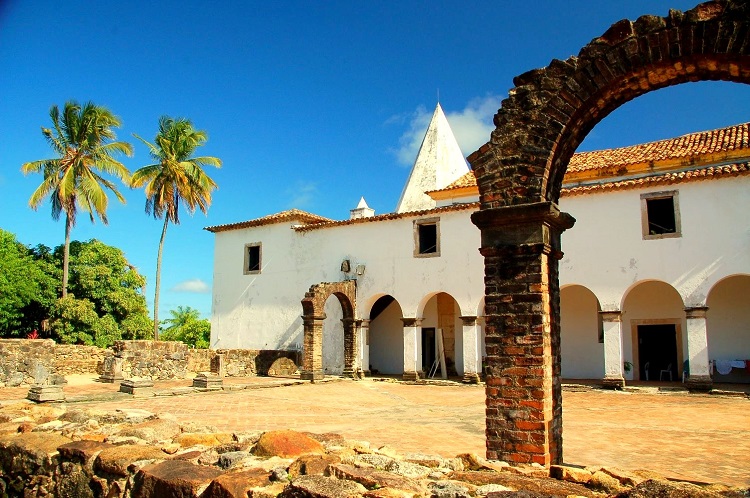

O QUE CONHECER EM CABO DE SANTO AGOSTINHO?

Santo Agostinho em Pernambuco

Cabo de Santo Agostinho no Ceará

Ruinas da Igreja Vila Nazaré em Pernambuco

Praia do Paiva

Calhetas em Pernambuco
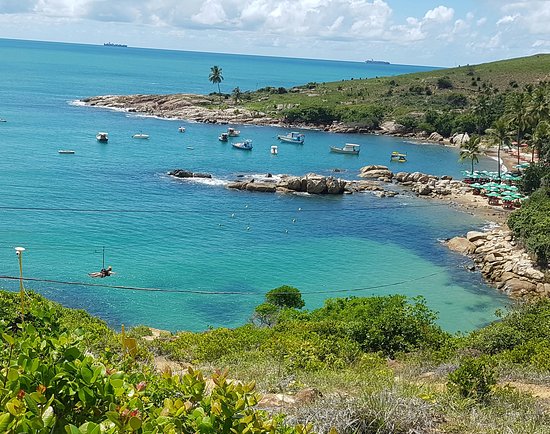
Praia de Calhetas - Cabo de Santo Agostinho02:36
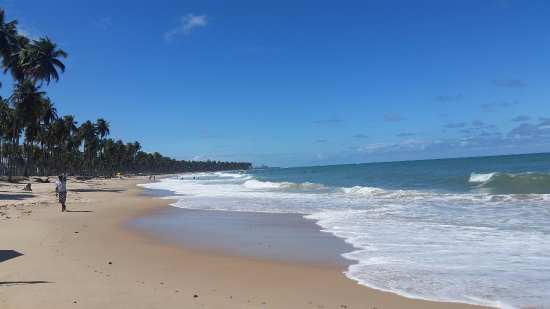
Praia do Paiva - Cabo de Santo Agostinho01:44
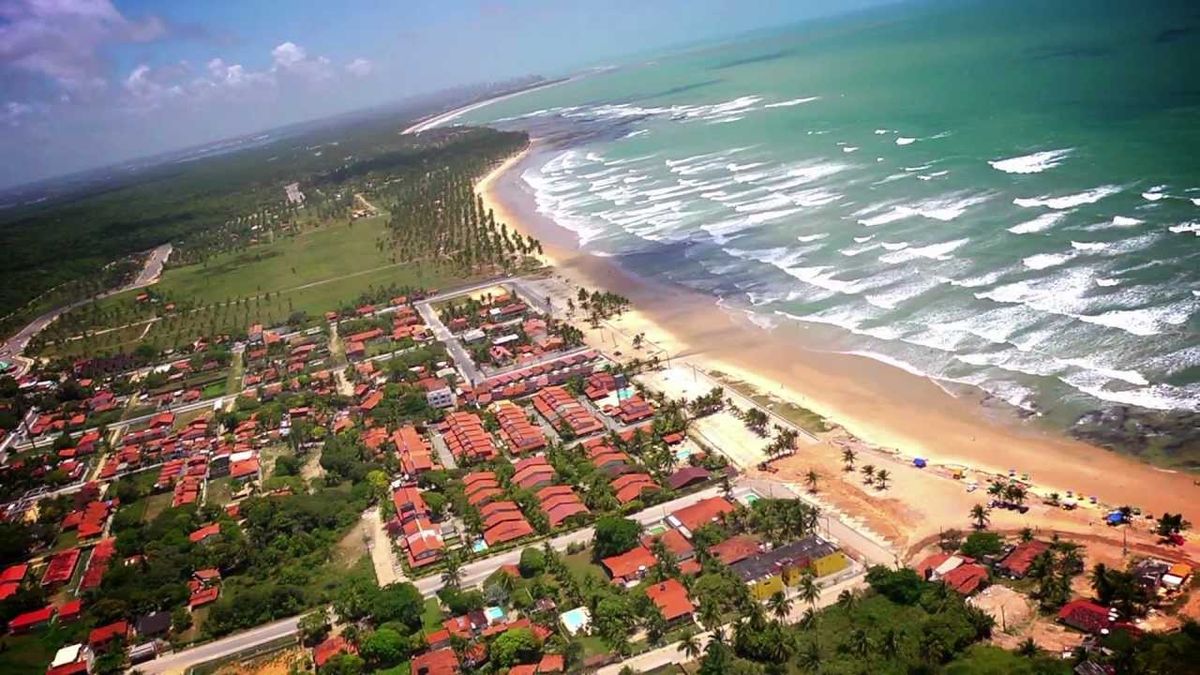
Praia de Itapuama em Pernambuco04:57
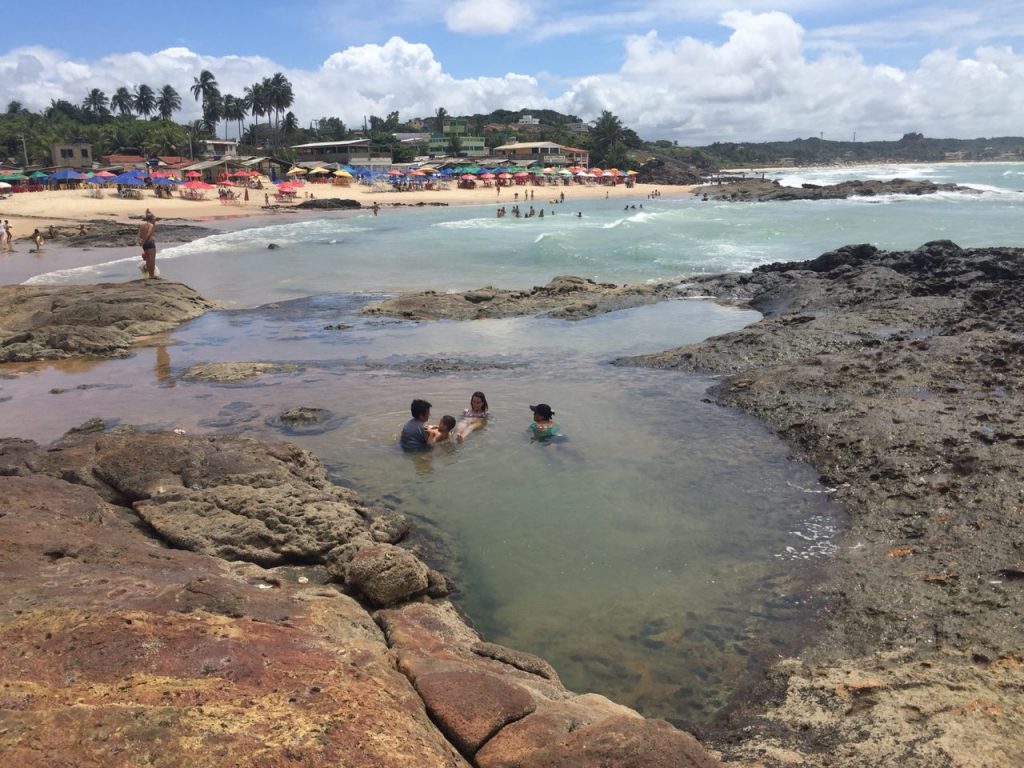
Pedra do Xaréu - Cabo de Santo Agostinho08:58
Praias do Cabo de Santo Agostinho in Pernambuco
1. Suape Beach
Praia de Suape is located between the Massangana River and Praia do Paraíso. An extensive sandstone reef acts as a barrier forming a true giant pool, without waves, ideal for swimming and water sports.
The beach is a meeting point for buggy drivers, has bars, restaurants, inns and an important Resort.
2. Paradise Beach
Praia do Paraíso is the smallest beach in Cabo, formed by a hill of volcanic rocks and two bays, the whole beach has only 30 metres, it is an ideal place for those who like peace and quiet.
It offers boat trips to the different islands and has only one floating boat.
3. Cabo de Santo Agostinho Beach
Praia do Cabo de Santo Agostinho is where the dividing point between the African and South American continents is located, a geographical accident more than 100 million years old. The beach of Cabo de Santo Agostinho is mentioned as the site of the discovery of Brazil by the Spaniard Vicente Pinzón.
4. Calhetas Beach
Praia de Calhetas is an ideal bay for snorkelling, underwater fishing and to enjoy delicious sea baths in warm blue waters.
It has good restaurants and traditional bars to enjoy in the middle of nature, coconut trees, volcanic rocks and the incredible beauty of the Atlantic Forest vegetation.
Calhetas is considered one of the most beautiful beaches in the world.
5. Paiva Beach
Praia de Paiva is where coral reefs form natural pools, making Paiva beach an ideal place for swimming, with beautiful landscapes composed of white sands, blue sea and five kilometres of a dense coconut grove.
Paiva beach is the first point of the Cape and the largest beach in the municipality. Access is via the beach.
Since 1987 the Lavadeira Festival has been held, an important popular event in the region.
6. Gaibu Beach
The name of Gaibu beach is of Tupi origin (aybu) and means “Water Eye”. Almost the entire beach is covered by a barrier of coral reefs, it seems that the beach has a wall in the middle of the water.
It is an ideal beach for surfing. One of its attractions is the climb of Morro das Pedras, from there you can see a beautiful perspective of the sea and Calhetas beach.
Praia de Gaibu is one of the most popular beaches on the coast of Cabo, there are good restaurants, bars, hotels and inns.
Enseada dos Corais
Enseada dos Corais is an ideal beach for swimming, its reefs form charming natural pools. In this beautiful beach are the ecological reserves Mata do Zumbi and Mata das Duas Lagoas.
It is located between Gaibú beach and Pedra do Xaréu.
In Enseada dos Corais you will find good accommodation options.
7. Itapuama Beach
Itapuama Beach is located between Pedra do Xaréu and Praia do Paiva.
The meaning of the name Itapuama is “Pedra Bonita”. Itapuama beach is characterised by the volcanic rocks and coconut trees that make up its beautiful landscape.
It is a beach with good waves, popular for surfing and has small boats on the shore and good inns to stay.
8. Pedra do Xaréu Beach
Pedra do Xaréu is on the side of Paiva beach. It is a beach with medium waves and light sands. In the middle of volcanic rocks, at low tide natural pools are formed, ideal for swimming and diving.
Its name is given by the large amount of shark fish that are found on the shore. It is a good place to savour delicious seafood.
Another possibility is to stay for a few days in Cabo de Santo Agostinho or in Porto de Galinhas, both with infrastructure of inns, hotels and resorts.
View the map of the south coast of Pernambuco
The Costa dos Arrecifes alternates between busy and quieter places and offers various types of leisure: diving in coral pools, hiking, buggy rides, surfing and water sports.
This point of land that juts into the sea is the westernmost place in Pernambuco and defies official Brazilian history: the Spanish navigator Vicente Pinzón landed there at the end of January 1500, about three months before Cabral arrived in Bahia; a bust in the Vicente Pinzón square honours him.

Located 33 kilometres from Recife, the old Arraial do Cabo arose from the exploitation of sugar cane and in its surroundings you can still see several mills amidst the green landscape.
In the Massangana mill, now the House of Culture, the abolitionist Joaquim Nabuco lived his first years.
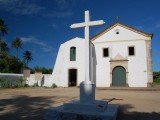
The ruins of military buildings on the beaches demonstrate its strategic importance in colonial times – the village witnessed clashes between Indians, Portuguese and Dutch.
It is worth climbing up to the village of Nazaré, the highest point in Cabo de Santo Agostinho, to admire the small 16th-century church of Nossa Senhora de Nazaré and the ruins of a 17th-century Carmelite convent.
History of Cabo de Santo Agostinho
The history of Cabo de Santo Agostinho begins well before the arrival of the Portuguese in Brazil. Like much of the Brazilian territory, the Cape was populated by indigenous people of the Caeté ethnic group.
The first settlements called Arraial do Cabo appeared in the second half of the 16th century.
It is formed by the Mother Churches of Sto Antônio, Sto Amaro, Nossa Senhora do Livramento and the old Chapel of Rosário dos Pretos (today Praça Théo Silva), and scarce houses represented by old buildings in the streets of Matriz (Rua Vigário João Batista) and Dr Antonio de Souza Leão.
The façades are protected by municipal law, but most are uncharacterised.
In 1560 João Paes Barreto already established the Morgado de Nossa Senhora da Madre de Deus do Cabo de Sto Agostinho, linking the Engenho Madre de Deus, later called Engenho Velho. The deed was drawn up on 28 October 1580.
According to Sebastião de Vasconcelos Galvão, author of the Dicionário Iconográfico, Histórico e Estatístico de Pernambuco, the town’s settlement dates from 1618; before that date it consisted of a few sparse houses, far apart.
More than two hundred years after the settlement of Sto Agostinho was elevated to the rank of parish, the town of Cabo de Sto Agostinho was created by the charter of 27 July 1811 and the Royal Provision of 15 February 1812, sent to the then governor of the province, General Caetano Pinto de Miranda Montenegro.
Its installation, however, took place on 18 February 1812, by the ombudsman and corregidor-general of the Recife District, Dr Clemente Ferreira de França.
The then Vila do Cabo de Sto Agostinho was elevated to the category of city on 09 July 1877, by provincial law no. 1,269, to the name of Cidade de Santo Agostinho do Cabo.
The Cape had its economy centred on the development of sugar cane monoculture, from 1570, with the donation of sesmarias along the Pirapama River.
João Paes occupied the land granted to him in 1571, south of the Araçuagipe River (Pirapama), and founded the first engenho bangüê (sugar mill) which he called Madre de Deus (today Engenho Velho), the oldest sugar centre in the region.
Later, with the creation of new mills, Cabo came to represent the economic power of the Province of Pernambuco, a time when sugar cane represented the country’s growth force.
Cabo de Santo Agostinho Tourism and Travel Guide in Pernambuco



















